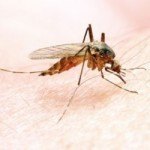 Using a more thorough type of analysis than has been used before to examine the genetic makeup of the malaria parasite, researchers from Harvard School of Public Health (HSPH), Harvard University, and the Broad Institute, in collaboration with colleagues at the Université Cheikh Anta Diop in Senegal, have pinpointed a significant number of sections of the genome that may play a role in the pathogen’s ability to resist drugs. Such information is crucial because malaria kills roughly 1.2 million people each year, mainly young children in sub-Saharan Africa. And, over the past several decades, as new malaria medications have been developed, the pathogen has developed resistance to many of them.
Using a more thorough type of analysis than has been used before to examine the genetic makeup of the malaria parasite, researchers from Harvard School of Public Health (HSPH), Harvard University, and the Broad Institute, in collaboration with colleagues at the Université Cheikh Anta Diop in Senegal, have pinpointed a significant number of sections of the genome that may play a role in the pathogen’s ability to resist drugs. Such information is crucial because malaria kills roughly 1.2 million people each year, mainly young children in sub-Saharan Africa. And, over the past several decades, as new malaria medications have been developed, the pathogen has developed resistance to many of them.
The researchers used a technique called whole genome sequencing and found 32 areas on the genome of Plasmodium falciparum, the human malaria parasite, that appear to be associated with drug resistance. That’s nearly three times as many areas as the same research group found in a study last year, according to lead author Danny Park of the Broad Institute and Harvard University.
“The assumption in the past was that we were seeing the whole genome by measuring a representative sample of the known mutations,” said Park. “But we found in this study that there was a lot that we missed. In malaria, you have to sequence the whole genome if you want to see everything.”
The study was published online July 23, 2012 in Proceedings of the National Academy of Sciences (PNAS).
In addition to using whole genome sequencing, the researchers strengthened their analysis by also using a common test for natural selection—called an XP-EHH test—to identify mechanisms involved in drug resistance. Pairing information gleaned from this test with the information from whole genome sequencing paints a very complete picture about drug resistance in the malaria parasite, they said.
“Using whole genome sequencing, which is now affordable given the small genome size and technology advancements in sequencing, coupled with innovative analysis strategies that combined tests for selection and association, created a powerful strategy for identifying mutations that track with drug resistance in malaria,” said senior author Sarah Volkman, principal research scientist in the HSPH Department of Immunology and Infectious Diseases.
The researchers suspect that gene alterations in the malaria parasite strengthen its stress response, thus helping it resist drugs. In the study, they analyzed the pathogen’s resistance to about a dozen antimalarial drugs and found numerous areas in the genome that appear to be involved.
The researchers found that using whole genome sequencing was much more effective in locating drug resistance mechanisms in the malaria parasite than the method researchers have commonly used for the last several years, called a genotyping array. In the study, they explain the shortcomings of using such arrays—which measure only specific points known to contain mutations, not the entire genome—to study the malaria parasite. These arrays rely on a genomic feature called “linkage disequilibrium” (LD) to indirectly detect much of the genetic variation in the genome. Put another way, by using LD, researchers are able to detect genomic changes by measuring neighboring mutations. This works quite well in studies of humans, who have significant amounts of LD and in whom such mutations near each other tend to track together. But there is almost no LD in the malaria parasite—which means that if scientists rely on using LD to find genetic clues about the parasite’s drug resistance ability, they may miss a lot of important information.
Instead, the researchers say, whole genome sequencing is a better approach for analyzing P. falciparum. And because the malaria parasite’s genome is so small, the cost of using whole-genome sequencing, while high for humans, is relatively inexpensive.
The authors strongly recommended that the whole genome sequencing method be used in future association studies of the malaria parasite as well as of other organisms with small genomes and low amounts of LD. “We anticipate that such a powerful approach can be applied both to new populations and traits in malaria as well as to other organisms to help identify areas of the genome involved in drug resistance,” said Volkman.
Other HSPH co-authors of the study included Dyann Wirth, chair of the Department of Immunology and Infectious Diseases, Richard Pearson Strong Professor of Infectious Diseases, director of HSPH’s Harvard Malaria Initiative, and co-director of the Broad Institute’s Infectious Disease Initiative; Pardis Sabeti, assistant professor in the Department of Immunology and Infectious Diseases, assistant professor at the Harvard FAS Center for Systems Biology, and senior associate member at the Broad Institute; Amanda Lukens, a postdoctoral fellow at the Broad Institute working with Wirth; Ulf Ribacke, research associate in the Department of Immunology and Infectious Diseases; Clarissa Valim, research scientist in the Department of Immunology and Infectious Diseases; Daria Van Tyne, graduate student in Wirth’s lab; and former research assistants Meghan Galligan and Justin Becker.
— Karen Feldscher



